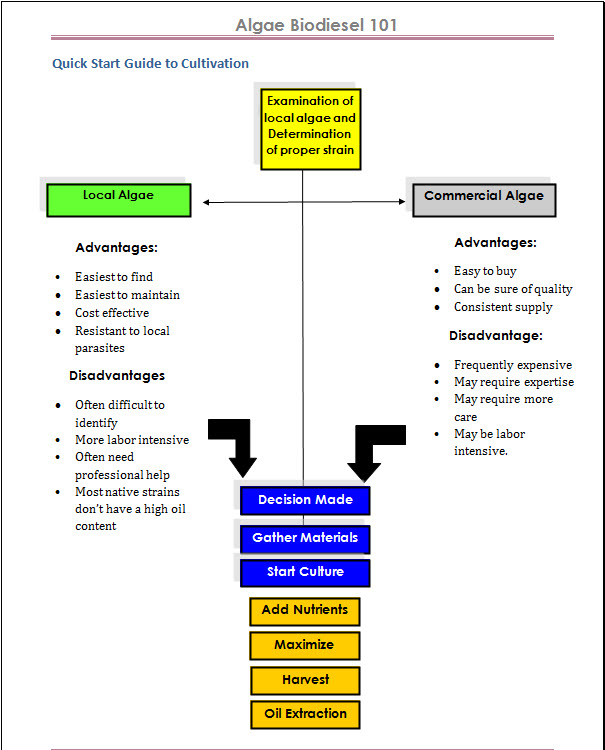
Algae Harvesting Techniques: One of the problems holding back commercial production of algae for biodiesel is an efficient, cost-effective, algae harvesting system. Harvesting is one of the major factors that must be overcome in order for algae to be used as a fuel source.
The good news is, there are a few algae harvesting techniques around that work on a small scale rather well.
The problem is that microalgae mass cultures are dilute, typically less than 500 mg/l on a dry weight organic basis, and the cells are very small. Many one celled species are around 5 micrometers in diameter. In order to be processed into biodiesel the algae must be in the form of a paste that is 15% solids. In the raceway ponds the mixture is about 1% solids, this mixture must go through a process which will result in a concentration of at least 15%
Inexpensive Algae Harvesting Techniques
Centrifugation

– The algae pond solution is pumped into a large centrifuge, which rotates at several thousand RPM causing the algae to be pressed against the outer wall, which is a filter only a few microns in spacing. The water is forced out, while the algae remain of the screen in the form of a paste about 20% algae. This is a proven method that has been extensively used when working with microalgae.
Studies have determined that a nozzle disc type centrifuge with intermittent discharge is the best option for algae harvesting (Mohn, 1988). The downfall however is the high power requirements or high cost associated with operating the centrifuge. For most home producers, the cost of the centrifuge makes this method prohibitive.
Chemical flocculation – Certain chemicals like lime, alum, or chitosan can be added to the algae pond solution causing charge neutralization of the algae. This results in the algae clumping together.
Ultrasound based methods of algae harvesting are currently under development, and other, additional methods are currently being developed. However, for the home grower, most of the methods are cost prohibitive.

Froth flotation is another method to harvest algae whereby the water and algae are aerated into a froth, with the algae then removed from the water. Alum and ferric chloride are chemical flocculants used to harvest algae. A commercial product called “Chitosin”, commonly used for water purification, can also be used as a flocculant.
The shells of crustaceans are ground into powder and processed to acquire chitin, a polysaccharide found in the shells, from which chitosin is derived. Water that is more brackish, or saline requires additional chemical flocculant to induce flocculation.
Harvesting by chemical flocculation is a method that is often too expensive for large operations. Interrupting the carbon dioxide supply to an algal system can cause algae to flocculate on its own, which is called “autoflocculation”.
There's is still a long way to go with algae harvesting techniques which can be applied both on a small, and large scale.
You might also be interested in...

The Algae Biodiesel Process
The algae biodiesel process is fairly straight-forward, however the devil is in the details. Read More

The Two Biggest Mistakes in Algae Biofuels
Without a doubt, The Two Biggest Mistakes I saw as a biofuel consultant in advanced biofuels were...Read More

Algae Biofuels: Separating Myth From Fact
Lot so wild stories and wild claims being made in the algae biofuels space. Sifting through the flotsam of cyberspace isn't easy... Read More
The Algae Revolution Has Begun
David, just read through your book on algal biodiesel. Nice layout, easy to read with emphasis on building from local materials and good optimism. We may use some of these ideas for our engineering senior design course this year on biofuels production. Thanks..
Professor of Biosystems Engineering



